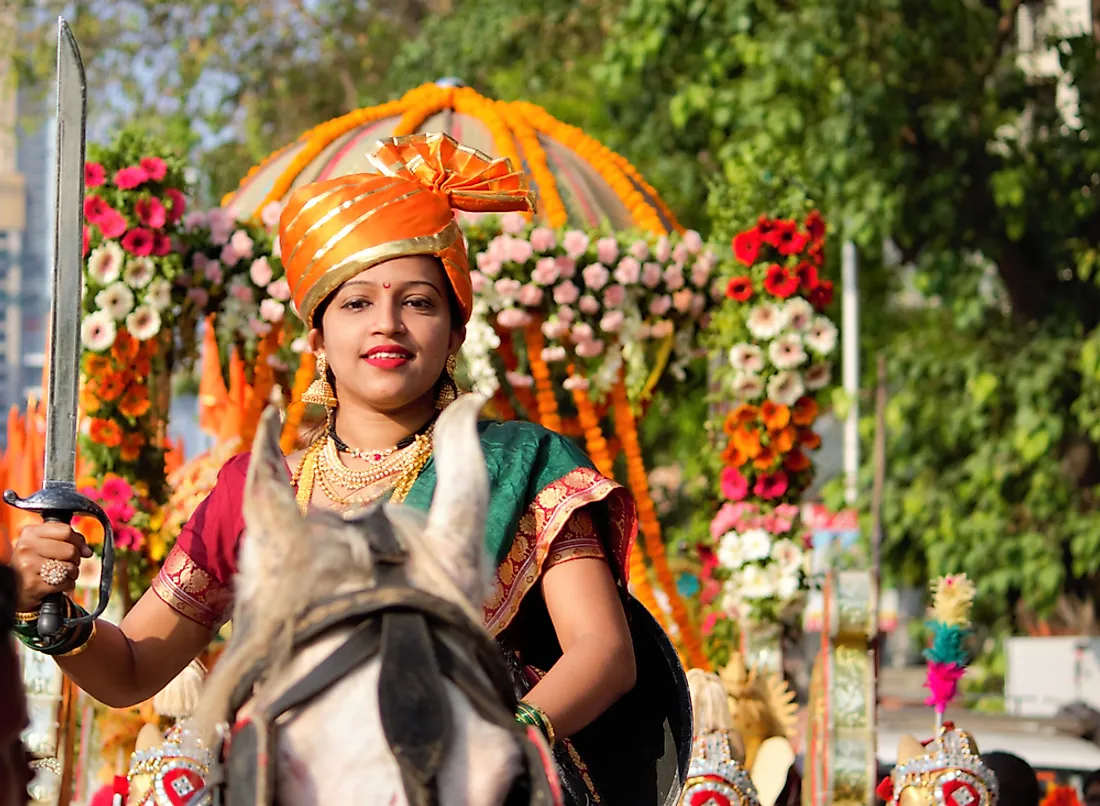Who are the Marathi People?

With a population of approximately 1.3 billion people, India is the world’s second most populous country. 122 major languages and other 1,600 languages are spoken in the country. 22 languages have been given official recognition and are collectively referred to as “scheduled” languages. One of the scheduled languages is the Marathi language, an Indo-Aryan language spoken by the Marathi people. The Marathis are an ethnolinguistic group mainly living in Maharashtra and the bordering districts such as Karwar and Belgaum in Karnataka and the state of Goa. There are approximately 83 million Marathi people in India and another 7 million in the diaspora such as Fiji, Guyana, South Africa, Jamaica, Suriname, and Mauritius.
History of the Marathi People
From 230 BC to the early 14th century (around 1321), Maharashtra came under the rule of several dynasties including Satavahana, Vakataka, Chalukya, Rashtrakuta, and Seuna Dynasties. For the next 300 years, the region was ruled by several Muslim rulers including the Khaljis and the Bahamani Sultanate. During the Islamic rule, the Marathas (Marathi People) were in charge of revenue collection and were considered a source of economic power and pride. Since most of the people in Maharashtra was Hindu and spoke the Marathi, the language was adopted by several sultans as the court language. In the 17th century, the Marathi Empire was founded by Shivaji Maharaj. Before the arrival of the British, the Maharashtra region was subdivided into several revenue divisions. However, the British had a great influence on the Marathi people, changing them in every aspect.
The Caste System
The Marathi people are distinct from other ethnic groups in terms of language, religious practice, culture, social structure, history, and art. They have a long tradition of caste hierarchy that pre-dates the arrival of the British. Traditionally, the Brahmin caste is considered the upper caste and consists of Marathi Brahmin, Prabhus, and Saraswat Brahmins. The majority of the Marathi Hindu either belong to the Bara Balutedar or Maratha-Kunbi castes. Other castes include Agri, Bhandari, Bhoi, Dhangar, Dhobi, Lonari, and Ramoshi. The different castes have been involved in different activities and are different status in the community. For instance, the Dhobi have traditionally washed clothes while Dhangar has been nomadic shepherds. The non-Hindu communities include the Marathi Christians, Marathi Buddhists, and Marathi Jains.
Marathi Hindu Customs and Culture
The main ceremonies of the Marathi Hindus are related to birth, initiation ceremonies, marriage, and death rituals. The Marathi people, like most Hindus, have shrines in their homes called “devaghar,” decorated with pictures, symbols, and idols of deities for daily devotions. In some families, the deities are first offered food before family members and guests are served. Each family has its own family patron known as “neivedya.” When children are born, they have to be initiated into the family ritually. The naming ceremony is referred to as “barsa” and takes place after weeks or months. The dead are often disposed by cremation. During cremation, the eldest son lights the fire at either the head for male or feet for female. The Marathi people also observe and celebrate several Indian Hindu festivals such as Diwali, Dasara, and Raksha Bandhan.











